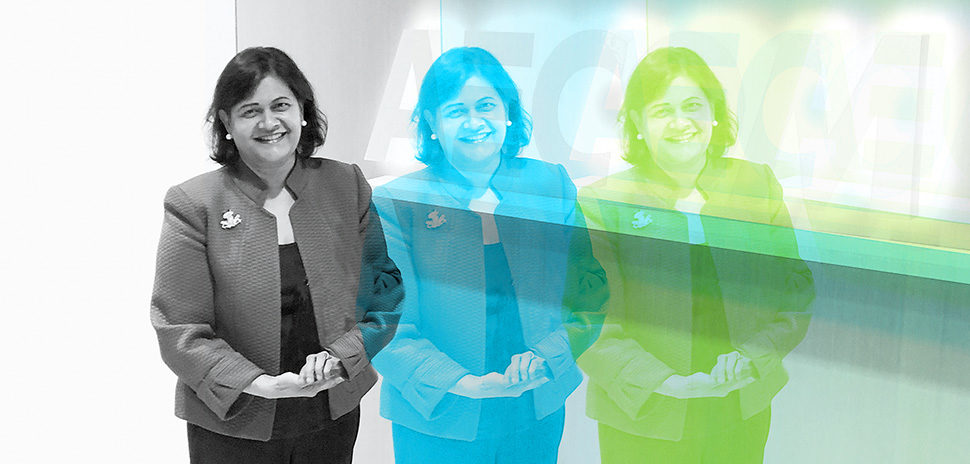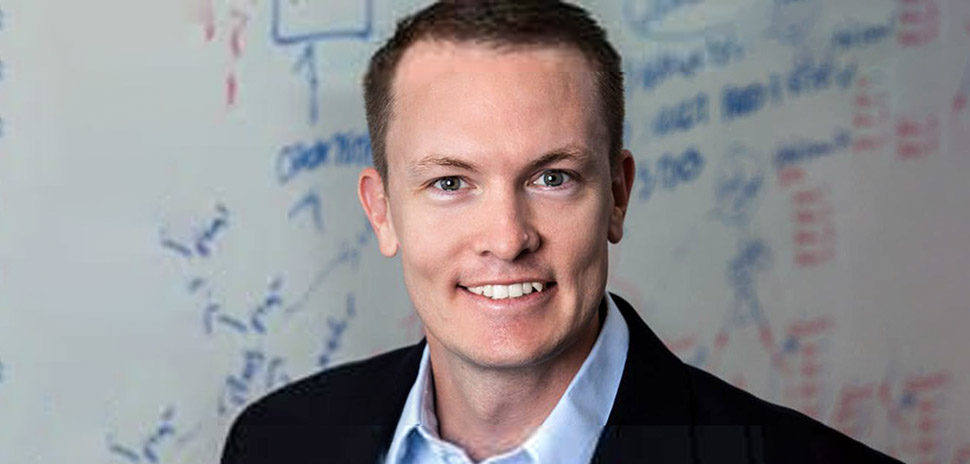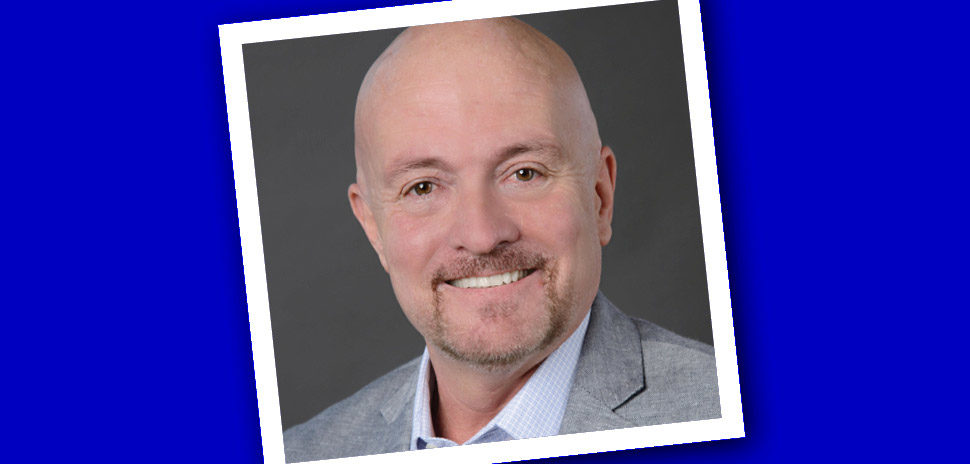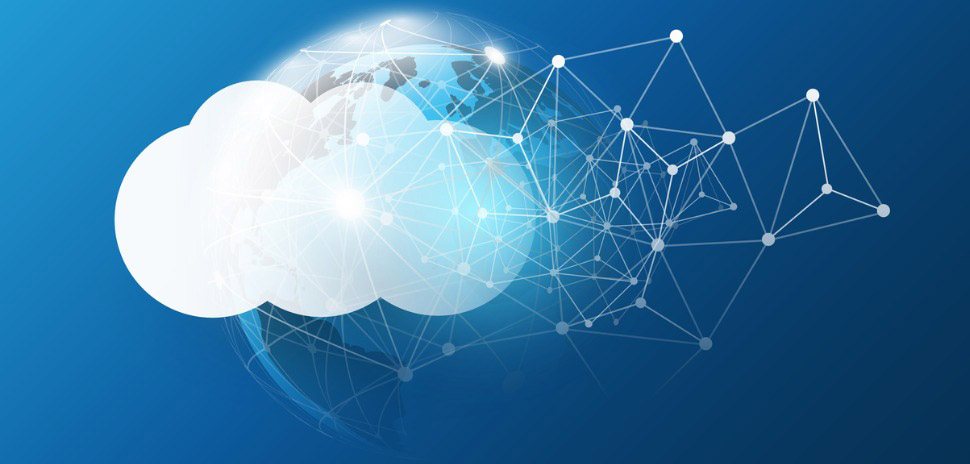“Imagine a world where no matter where you are you can get coverage, in any kind of emergency,” says Kate Hopkins, a vice president at Dallas-based AT&T.
ENTERPRISE
Data Wrangler
Kate Hopkins
Hopkins credits the company’s investment in advanced technology for new innovations that support the first responder community and protect the public. Recently, her team’s work on in-building data sets helped provide coverage in all ERs in a major U.S. city. That’s just one example of how the company is making its vision of highly secure and reliable coverage a reality, she says.
Beyond the first responder community, AT&T also works to make sure “every call you receive is one you want from a real person,” Hopkins says, adding that fraud is more prevalent in times of economic hardship.
“AT&T already blocks over 1.2B fraudulent robocalls annually through its network blocking program,” she says. “My team worked with our Chief Security Office and our Global Fraud Management Organization to implement new machine learning algorithms and processes to increase robocall detection by over 10 percent.”
The team was able to provide the FCC with data that helped it levy a record-breaking $225M fine against robocall perpetrators, she says.
Meet the innovator
Kate Hopkins was featured in Dallas Innovates’ Future 50 in Dallas-Fort Worth in the 2021 edition of our annual magazine. We talk with the AT&T innovator about how her team is helping first responders, shutting down robocalls, and working toward major transformation in telecommunications. Here’s a takeaway.
On her team and notable developments at AT&T in the last year:
It’s difficult to pick just one, but I’m most proud of how AT&T has capitalized on technology advances to help the first responder community. In one example, our team joined geo-tagged performance and usage metrics with a U.S. building database to create building-level data sets. The datasets provide valuable building-level metrics for measuring the network usage and performance via a customer device. The value of that information was recently on display when AT&T’s network team was asked by a major U.S. city’s fire department to provide coverage in every emergency room for each hospital throughout the city. The in-building datasets helped identify and prioritize coverage for the in-building locations. In addition, our team worked with our security team on a threat detection implementation for the AT&T FirstNet network keeping it malware-free and first responders safe while browsing.
Our work to combat fraud on behalf of our customers continues to amaze me. It’s a shame, but in times of economic hardship, fraud becomes even more prevalent. AT&T already blocks more than 1.2B fraudulent robocalls annually through its network blocking program. My team worked with our Chief Security Office and our Global Fraud Management Organization to implement new machine learning algorithms and processes to increase robocall detection by more than 10 percent. In addition, we provided data on robo-callers who were using spoofed numbers (valid and invalid) to call customers and pitch a low-quality health care plan while falsely claiming affiliation with large, legitimate health care providers. This data ultimately helped the Federal Communications Commission levy a $225M fine (the largest in its 86-year history) on the perpetrators.
On how trust matters:
Our customers rely on us to provide them highly secure and reliable coverage. Imagine a world where no matter where you are you can get coverage, in any kind of emergency. And one in which you can trust every call you receive is one you want from a real person. We aren’t there quite yet, but with advances like the ones above, we hope to get there.
On embracing diversity and supporting employees during the pandemic:
AT&T is a company that strongly promotes diversity and inclusion. Two of our core values are Embrace Freedom and Stand for Equality. In the face of the tragedies highlighted this summer, leadership communication advocating against violence and racism was immediate and consistent. Employees were eager to have conversations to share their experiences and to learn—for me, this happened in mentoring circles I facilitated, in chat rooms I opened for this kind of interaction, and one-on-one via email. Though not always easy, ultimately these were constructive dialogs and brought our teams closer together during an extremely challenging time.
I’m also extremely proud of AT&T’s actions during COVID-19, which was a rapid, safety-first approach that focused on employees who were on our front-lines still interacting with customers, at-risk from a health perspective, or thrust into a caregiver role at home. All employees were reminded of support mechanisms available to us and in my day-to-day interactions, I found myself and many others became more tolerant and generous of our employees as people, with families and stresses above-and-beyond the ordinary.
As we have stretched into the long-term, the company is re-thinking how we will work and interact with each other, knowing that many employees have proven to be more productive at home, while others are eager to get back into the office in a safe way.
On a WFH connection:
With most of our employees working at home since mid-March due to COVID-19, our team members are looking for new ways to connect. Our all-volunteer Culture team took on a renewed purpose to find ways for our organization to come together including hosting diversity & inclusion forums where employees shared their personal backgrounds and stories. Our team sought leadership support to sponsor well-attended online events for Dia de los Muertos and Diwali, where we partnered with employee groups to learn about the holidays, traditions, and food. People shared memories of celebrations in their home countries and several made videos of themselves and their families preparing recipes of dishes often served during those special days. Our next event will honor Black History Month.
While these may seem like standard diversity events, they really have become something more for our team. They have become a way to show that we are adaptable in the face of adversity and that we find strength in our knowledge and understanding of others’ unique backgrounds. We realized that prior to COVID-19 our events had become very locally-oriented and in our geographically diverse organization, video has helped us reach across to all our team members in a different and improved way. While this came about in response to the pandemic, it has actually helped us work better together to solve business problems for AT&T.
On what’s next for her team:
We’re embarking on a major transformation journey to make data insights accessible throughout AT&T. The technology change is significant as we migrate from a largely on-premises ecosystem to a public cloud. We’re moving from a diverse set of siloed technologies to a holistic strategy that allows us to share data, tools, and insights easily. Our goal is to have a more democratized, self-service data ecosystem with transparent governance to help ensure security and privacy. The change is massive, but I’ve never seen my team so excited and energized to make this happen for AT&T.
This Q&A has been edited for brevity and clarity. A version of the story was originally published in Dallas Innovates 2021: The Resilience Issue.
Read it online
Our fourth annual magazine, Dallas Innovates 2021: The Resilience Issue, highlights Dallas-Fort Worth as a hub for innovation. The collective strength of the innovation ecosystem and intellectual capital in Dallas-Fort Worth is a force to be reckoned with.
![]()
Get on the list.
Dallas Innovates, every day.
Sign up to keep your eye on what’s new and next in Dallas-Fort Worth, every day.
—
Next up? Leveraging the latest in AI technology with a potential rebrand in the works, Colón hints.

































